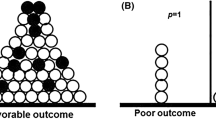Abstract
Voriconazole (VRCZ) reportedly possesses a broad spectrum of antifungal activity against Aspergillus spp. and Candida spp., and the blood concentration of VRCZ is correlated with both the efficacy and the adverse effects of this drug. Monitoring of the blood concentration target level of VRCZ has not yet been widely adopted in the medical field, and no evidence concerning this target level has been reported. Accordingly, we used a meta-analysis to investigate the optimal blood concentration of VRCZ. Using data from 12 reports, we found that the success rate for fungal infection treatment increased significantly at VRCZ levels greater than 1.0 μg/ml when a graded cutoff value within the range of 1.0–3.0 μg/ml was used as the VRCZ trough blood concentration [odds ratio (OR) 7.23, 95% confidence interval (CI) 2.84–18.37, P < 0.0001]. Concerning the safety evaluation, the incidence of adverse neurological effects increased significantly at a cutoff value of 4.0 μg/ml when a graded cutoff value within the range of 3.0–6.0 μg/ml was used (OR 2.23, 95% CI 1.12–4.46, P = 0.02). However, in all 12 literature sources, an increasing incidence of liver dysfunction was reported at higher blood concentrations, and no accurate cutoff values were obtained. Consequently, a VRCZ trough blood concentration more than 1.0 μg/ml from the perspective of efficacy and less than 4.0 μg/ml from the perspective of safety is recommended.

Similar content being viewed by others
References
Epinel-Ingroff A. In vitro activity of the new triazole voriconazole (UK-109, 494) against opportunistic filamentous and dimorphic fungi and common and emerging pathogens. J Clin Microbiol. 1998;36:198–202.
Deep-Seated Mycosis Guidelines Editorial Committee. Guidelines for management of deep-seated mycosis 2007. Tokyo: Kyowakikaku; 2007 (in Japanese).
Goodwin ML, Drew RH. Antifungal serum concentration monitoring: an update. J Antimicrob Chemother. 2008;61:17–25.
Andes D, Marchillo K, Stamstad T, Conklin R. In vivo pharmacokinetics and pharmacodynamics of a new triazole, voriconazole, in a murine candidiasis model. Antimicrob Agents Chemother. 2003;47:3165–9.
Wood N. Pharmacokinetics of Voriconazole. Jpn J Chemother. 2005;53:16–23.
Wang G, Lei HP, Li Z, Tan ZR, Guo D, Fan L, et al. The CYP2C19 ultra-rapid metabolizer genotype influences the pharmacokinetics of voriconazole in healthy male volunteers. Eur J Clin Pharmacol. 2009;65:281–5.
Common Terminology Criteria for Adverse Events (CTCAE) v3.0. http://www.jcog.jp/.
Yamaguchi H. Antifungal activity of voriconazole. Jpn J Chemother. 2005;53:8–15.
Egger M, Davey SG, Schneider M, Minder C. Bias in meta-analysis detected by a simple, graphical test. BMJ. 1997;315:629–34.
Matsumoto K, Ikawa K, Abematsu K, Fukunaga N, Nishida K, Fukumizu T, et al. Correlation between voriconazole trough plasma concentration and hepatotoxicity in patients with different CYP2C19 genotypes. Int J Antimicrob Agents. 2009;34:91–4.
Hagiwara E, Shiihara J, Matsushima A, Enomoto T, Tagawa A, Sekine A, et al. Usefulness of monitoring plasma voriconazole concentration in patients with chronic necrotizing pulmonary aspergillosis. Nihon Kokyuki Gakkai Zasshi. 2009;47:93–7.
Ueda K, Nannya Y, Kumano K, Hangaishi A, Takahashi T, Imai Y, et al. Monitoring trough concentration of voriconazole is important to ensure successful antifungal therapy and to avoid hepatic damage in patients with hematological disorders. Int J Hematol. 2009;89:592–9.
Shimoeda S, Nakazawa K, Kobayashi H, Nakagawa S, Yamato S, Sasaki M, et al. Clinical significance of measuring serum concentrations of voriconazole in the hematological field. Jpn J Pharm Health Care Sci. 2008;34:638–43.
Okuda T, Okuda A, Watanabe N, Takao M, Takayanagi K. Retrospective serological tests for determining the optimal blood concentration of voriconazole for treating fungal infection. Yakugaku Zasshi. 2008;128:1811–8.
Pascual A, Calandra T, Bolay S, Buclin T, Bille J, Marchetti O. Voriconazole therapeutic drug monitoring in patients with invasive mycoses improves efficacy and safety outcomes. Clin Infect Dis. 2008;46:201–11.
Imhof A, Schaer DJ, Schanz U, Schwarz U. Neurological adverse events to voriconazole: evidence for therapeutic drug monitoring. Swiss Med Wkly. 2006;136:739–42.
Obata Y, Takada T, Tamura K. Zoukishikkan wo Kisosikkan tosita Shinsyusei Aspergillus reiniokeru Voriconazole no Yakubutukettyuunoudo Monitoring to Rinsyokouka. Jpn J Chemother. 2008;56:172.
Yoshida H, Sawada K, Tuzuki K, Suzumura Y, Oohira Y, Yoneyama E, et al. Voriconazole no TDM. Zisshi No Igi (Jpn J Pharmacol Ther). 2007;38:S239.
Takakura S, Sawada K, Fujiwara N, Saitoh T, Itoh Y, Iiinuma Y, et al. Voriconazole Kettyuu Noudo Monitoring no Hituyousei. Jpn J Chemother. 2006;54:56.
Denning BW, Ribaud P, Milpied N, Caillot D, Herbrecht R, Thiel E, et al. Efficacy and safety of voriconazole in the treatment of acute invasive aspergillosis. Clin Infect Dis. 2002;34:563–71.
Smith J, Safdar N, Knasinski V, Simmons W, Bhavnani SM, Ambrose PG, et al. Voriconazole therapeutic drug monitoring. Antimicrob Agents Chemother. 2006;50:1570–2.
Tan K, Brayshaw N, Tomaszewski K, Troke P, Wood N. Investigation of the potential relationships between plasma voriconazole concentrations and visual adverse events or liver function test abnormalities. J Clin Pharmacol. 2006;46:235–43.
Niki Y, Yoshida M, Shimada K, Kohno S, Masaoka T, Yamaguchi H, et al. A clinical trial of voriconazole for deep-seated mycosis. An uncontrolled multicenter study. Jpn J Chemother. 2005;53:32–50.
Parkinson A, Mudra DR, Johnson C, Dwyer A, Carroll KM. The effects of gender, age, ethnicity, and liver cirrhosis on cytochrome P450 enzyme activity in human liver microsomes and inducibility in cultured human hepatocytes. Toxicol Appl Pharmacol. 2004;199:193–209.
Hamada Y, Komatsu T, Seto Y, Matsubara H, Kume H, Sunakawa K, et al. Liposomal-amphotericin B efficacy and safety. J Jpn Assoc Infect Dis. 2010;84:193–8.
Acknowledgments
We wish to express our deep gratitude to each of the authors who contributed their valuable time in providing the databases necessary for this study.
Author information
Authors and Affiliations
Corresponding author
About this article
Cite this article
Hamada, Y., Seto, Y., Yago, K. et al. Investigation and threshold of optimum blood concentration of voriconazole: a descriptive statistical meta-analysis. J Infect Chemother 18, 501–507 (2012). https://doi.org/10.1007/s10156-011-0363-6
Received:
Accepted:
Published:
Issue Date:
DOI: https://doi.org/10.1007/s10156-011-0363-6




